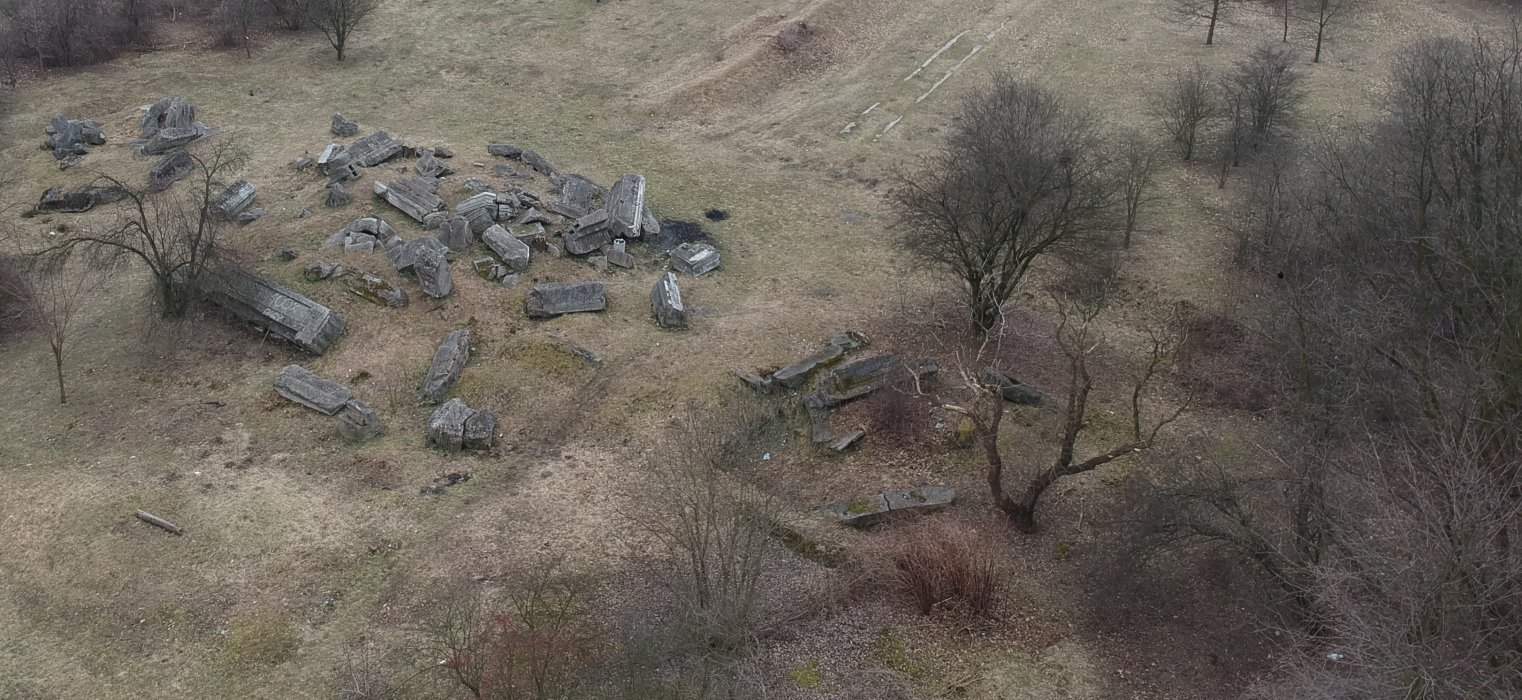The KL Plaszow Sound Monument

The Sound Monument of KL Plaszow is designed as a multilayered, collective audio composition created on the basis of a concept authored by Roma Sendyka and a scenario authored by Michał Libera. The inspiration for the Sound Monument composition is given by the soil in the camp area: the soil understood as a depository of the memory of camp Plaszow and its history, and as a source of audio material.
The Sound Monument will only be available to visitors through headphones connected to mobile devices collected from the Museum. The Sound Monument will not be heard in the post-camp area without those devices, and the only sign of its presence will be people with headphones, walking in the camp area, guided by the composition structure, at a pace and in a direction of their choice.
The Sound Monument will only be available to visitors through headphones connected to mobile devices collected from the Museum. The Sound Monument will not be heard in the post-camp area without those devices, and the only sign of its presence will be people with headphones, walking in the camp area, guided by the composition structure, at a pace and in a direction of their choice.
- What is the concept of the Sound Monument?
The Sound Monument is designed as a multi-layered collective audio composition. Thus, a group of musicians will create various parts of the composition that will be combined to form a coherent work according to the adopted scenario. Its individual parts will be assigned to specific locations in the camp area, in accordance with associations evoked by their contents and sound. The Sound Monument can be compared to a film score. However, the sound will correspond here not with pictures on the screen but with the landscape of the former German Nazi camp Plaszow. The composition will only be heard through earphones collected in the museum. The Sound Monument will cover the entire camp area.
- What is commemorated by the Sound Monument?
The Sound Monument will commemorate the tragic events that took place in former KL Plaszow. It also pays tribute to the earth here as a natural depository of memory.
- What is the purpose of the Sound Monument?
The Sound Monument is aimed at encouraging visitors to stay a little longer in the camp area, making them feel a stronger link with the earth they walk on, sense and realize the historic significance of this land and its vulnerability, and finally - the weight of their steps. The Sound Monument is also designed for inspiring visitors to choose their own individual routes.
- What musical forms will be used in the Sound Monument?
An original composition for an organ made from Plaszow limestone; field recordings of the earth in the camp area; new music to the lyrics of songs once sung in the camp; other compositions making complete the outline of the Sound Monument.
- Will the Sound Monument be loud and cause nuisance?
No. It will only be heard through earphones. No loudspeaker will be installed in the camp area or its vicinity.
- Where and how can the Audio Monument be listened to?
The Monument will only be available in the camp area through earphones connected to players rented from the Museum - KL Plaszow Memorial Site.
- When will work on the Sound Monument be complete?
The Sound Monument will be complete in 2025.
- Is listening to the Sound Monument inseparable from visiting the KL Plaszow Memorial Site?
No. Visitors can also visit the museum area without listening to the Sound Monument.
- Who are the authors of the Sound Monument?
The music created for the Sound Monument is authored by musicians, composers, performers and artists engaged in producing contemporary, experimental music and furthering the art of sound - as well as by the builder of the stone organ. The group of authors of the Sound Monument also includes scholars who conduct research on history and memory, dramaturgy, visual arts, sound engineering, designing multimedia platforms.
- What can be heard in the Sound Monument?
The composition will almost entirely consist of voices, and sounds produced by local limestone, and broader - by the earth. We will hear the lyrics of songs once sung in the camp and now performed by invited artists. Other components of the composition will originate principally from Plaszow limestone, with various techniques employed to make it emit sounds. We will use for this purpose advanced percussion methods to record its internal vibration, air movement in its pores, and will build a unique instrument: a limestone organ. The instrument will be used to perform this dedicated work.
The KL Plaszow Memorial Museum in Kraków
The German Nazi Labour and Concentration Camp (1942–1945)
The KL Plaszow Museum is a cultural institution of Kraków City and is co-managed by the Ministry of Culture and National Heritage
This website uses cookies to provide its services in accordance with the Cookies Policy. You can specify the conditions for storing or accessing the cookies mechanism in your browser.


